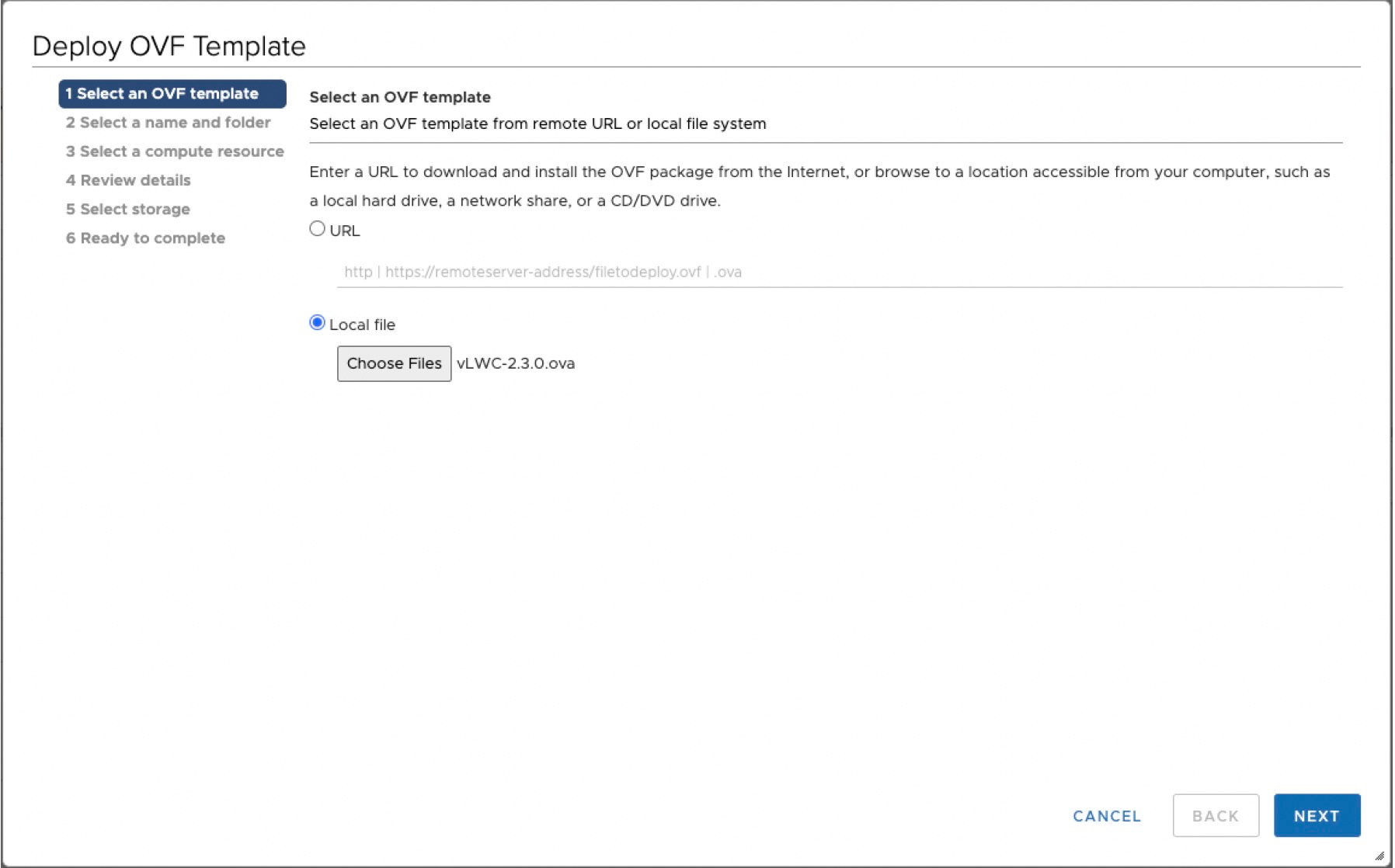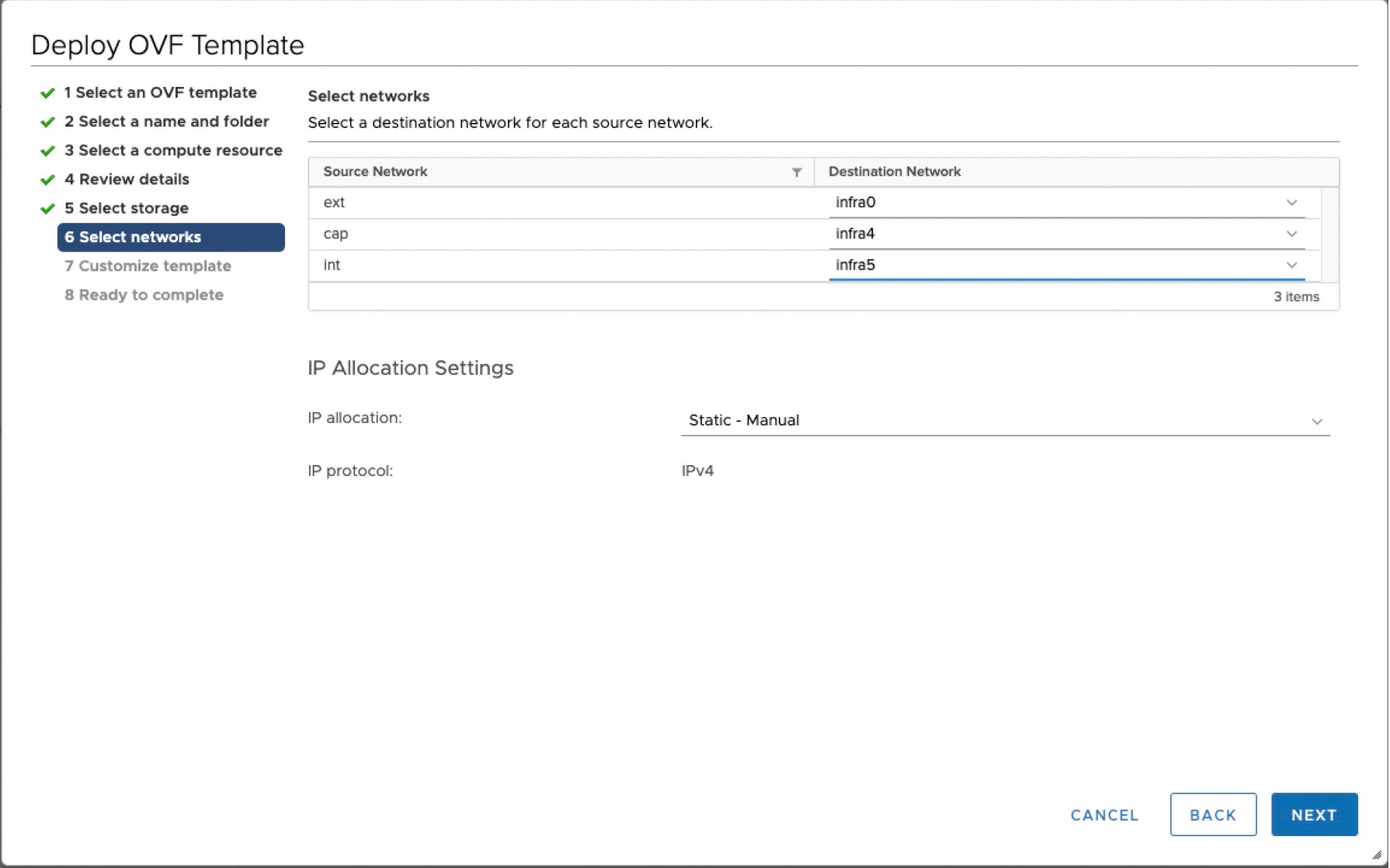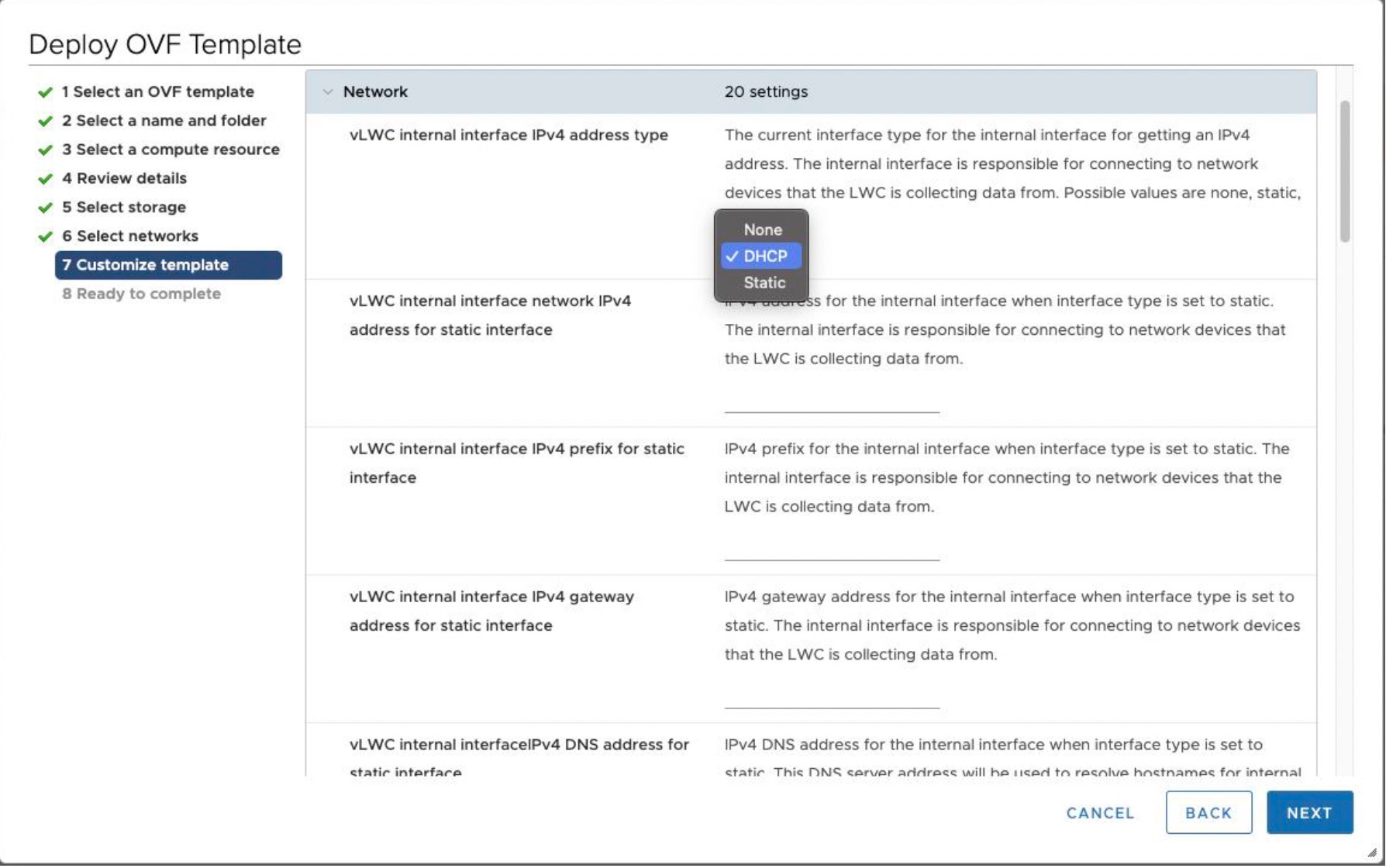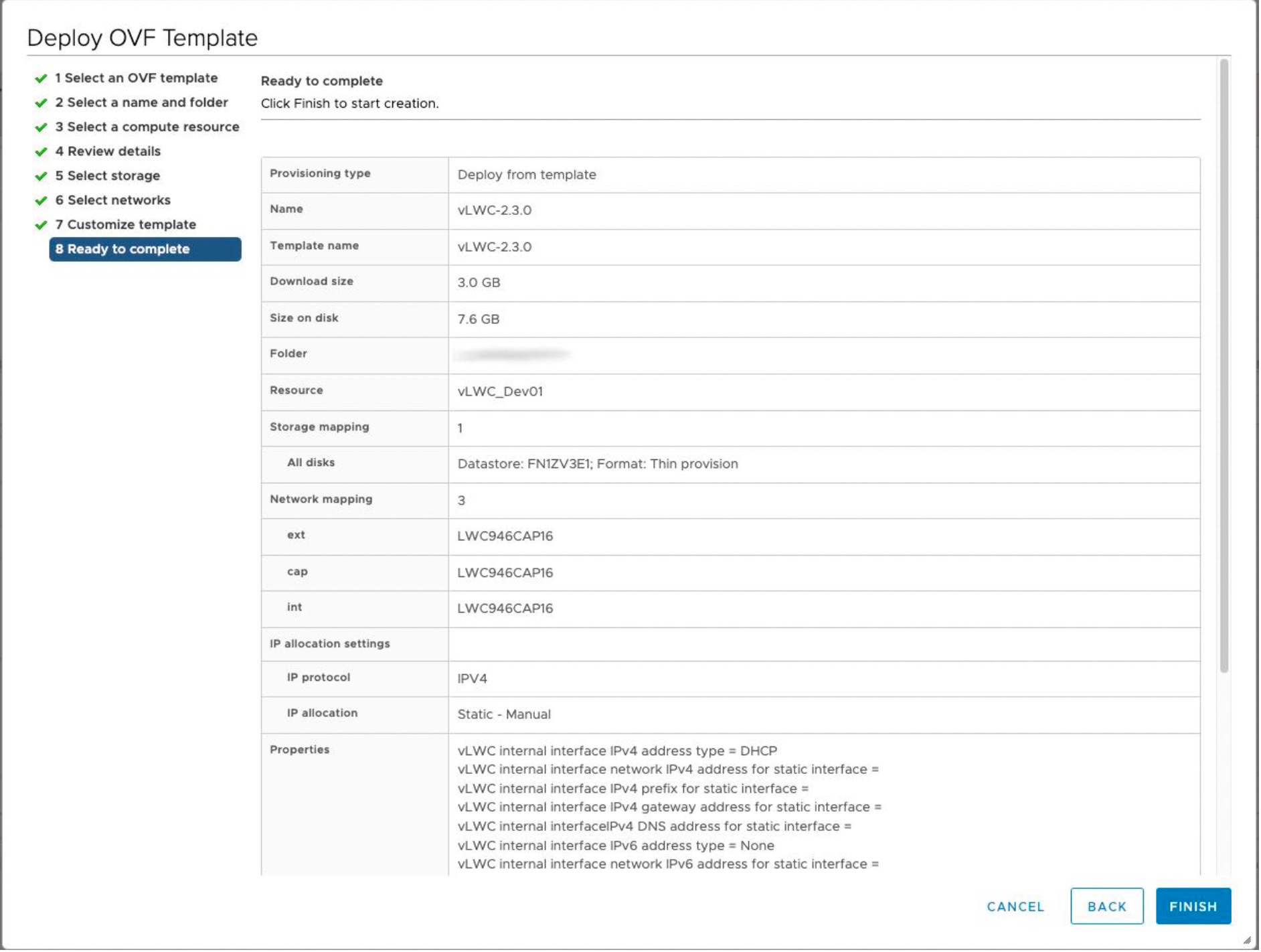Install vLWC and Verify Installation
This section explains how you can install the vLWC vApp on a VMWare environment and verify your installation.
Install vLWC using vCenter Server
Verify Installation
Once installation is complete and vLWC is powered on, you can confirm a successful deployment through the Summary page of the VM. The Summary page of the ggc-lnx VM is located under the vLWC vApp entry. It should show an Ubuntu Linux (64-bit) VM running with VMWare tools also running along with the IP addresses assigned to the VM in the IP addresses list. See Figure 1.
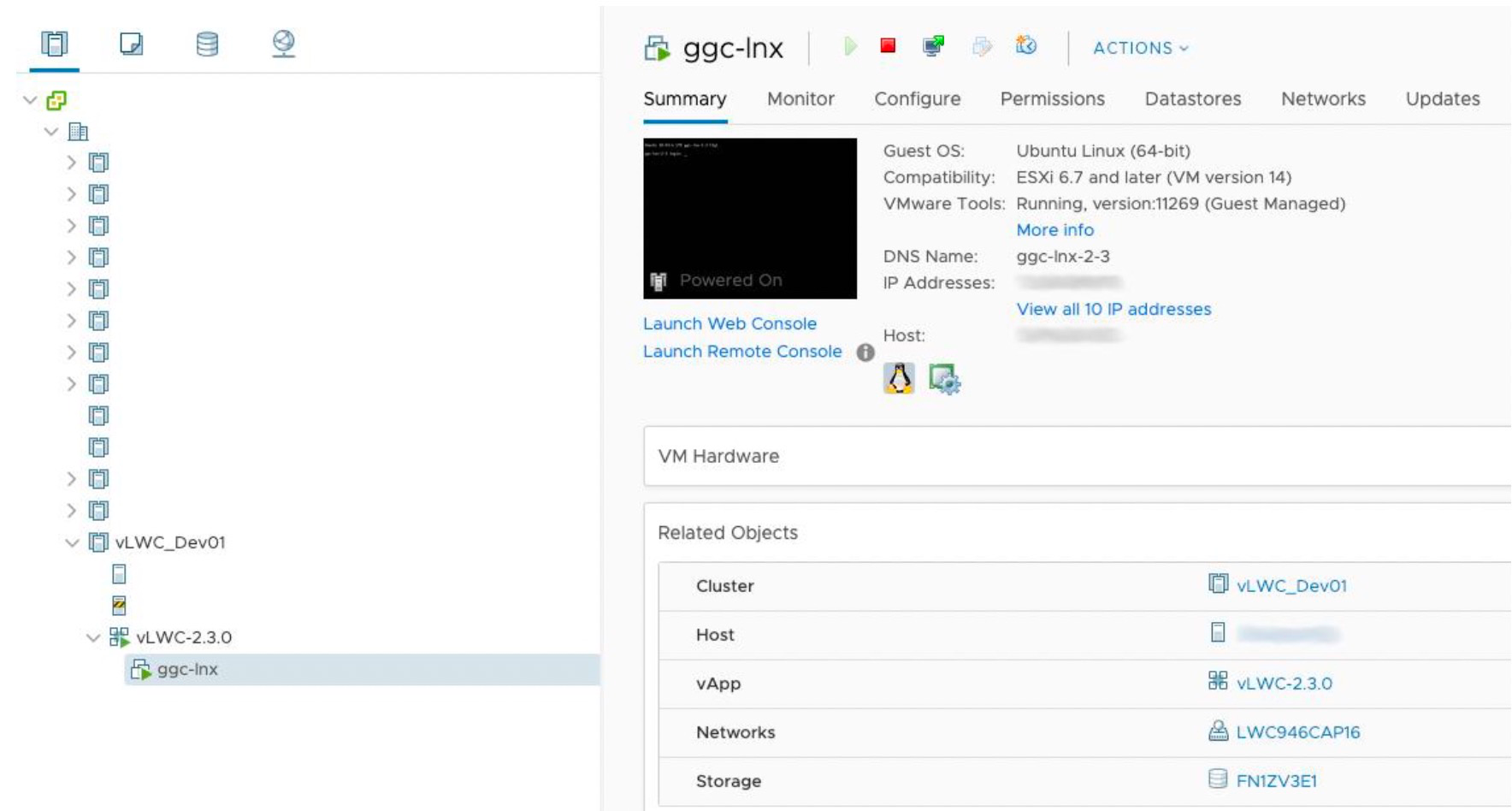
From the Summary page, you can also launch a console connection to the VM and view the current network status through the JSI Shell.

